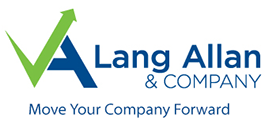
With the exception of land, all tangible property generally loses value over time because it deteriorates (e.g., buildings or vehicles), becomes obsolete (e.g., computers) or loses protection against competition (e.g., patents). This has a specific impact on businesses, which are required to match the revenue a property generates (income) recorded on its balance sheet with the cost of maintaining that property (depreciation expense) reported on its income statement.
Practically speaking, however, it’s nearly impossible to assign a revenue-generating value to most property. How can you realistically differentiate between the revenue generated by each computer your business uses?
This is where depreciation becomes relevant. Depreciation is the value of wear and tear and obsolescence on an asset.
Calculating Depreciation
Depreciation is calculated using two factors: useful life and salvage value.
Useful life. For depreciation purposes, the useful life of an asset is the length of time the asset can reasonably be expected to be of use to the company considering criteria like the asset’s age when it was acquired and how it is used in the business. An asset is considered a tangible asset if it has a useful life of one year or more.
The Internal Revenue Service sets guidelines for set classes of assets, but these guidelines can be adjusted for a compelling reason. For example, suppose your business is a successful advertising agency that uses cameras to take pictures for commercials. Now suppose your business is a law firm that uses a camera to take pictures at firm events. The useful life of the camera the law firm uses will be longer than the one used by the advertising agency.
Salvage value. An asset’s salvage value (also called “residual value” or “scrap value”) is the amount a business estimates it can sell the asset for at the end if its useful life to the business. It’s important to keep in mind that an asset’s salvage value is not necessarily the same as its market value.
Claiming Depreciation Expenses
Depreciation is calculated based on the asset cost minus its estimated salvage value. However, how your business decides to claim its depreciation expense can make a difference:
- The accelerated depreciation method allows more depreciation to be recognized when the asset is newer. This results in lower taxes in the near term.
- The straight-line depreciation method uses a steady depreciation rate over the asset’s useful life.
- The units-of-production method depreciates the asset according to its actual usage.
If you are worried about what happens if an asset’s useful life or salvage value changes, there is a solution — but it comes with a caveat. You can change the calculation over the remaining life of the asset, but you cannot go back and change information that has already been reported.
Perhaps the most challenging aspect of depreciation is that it can affect cash flow even though no cash changes hands. Because depreciation is listed as an expense, it reduces the company’s taxable income and increases its net income.
Call us today if we can help you with depreciation issues at your business.
